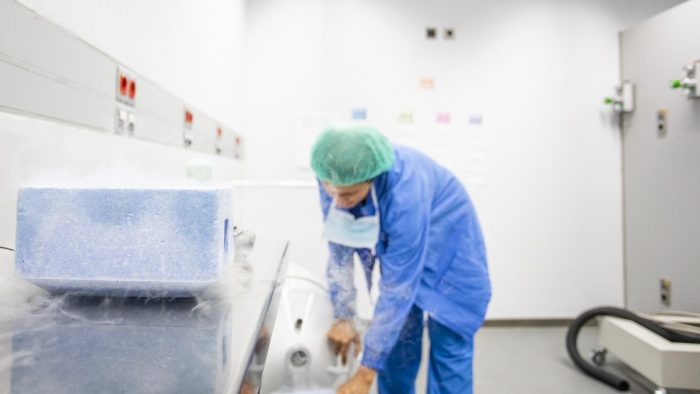



The vitrification of oocytes is one of the techniques used in preserving fertility. It allows a woman’s reproductive capacity to be postponed for as long as she wants, with the same possibilities as at the point when the oocytes are vitrified. With the vitrification of oocytes, women can reach middle age without experiencing any significant decrease in their ability to conceive a child in the future.
RESULTS
90% of patients who undergo an assisted reproduction treatment at IVI become pregnant.
CARE
97% of our patients recommend IVI.
IVI provides personalised care and support during all stages of treatment.
TECHNOLOGY
IVI is a pioneer in the latest assisted reproduction technology in order to present the best results.
PRICE-QUALITY
We are not the most expensive choice. We offer the most treatment options in order to achieve the best results.


The main advantage of the vitrification of oocytes in contrast to traditional freezing is that ice crystals, which would damage the oocyte, do not form, and around 97% survive the process. Furthermore, the same clinical results are obtained as when fresh oocytes are used.
Of the different vitrification techniques that are available, the Cryotop method is the newest and the one with the best results. IVI has pioneered the incorporation of this technique and is the European leader in its clinical use. With the Cryotop technique, survival figures of up to 97% have been achieved for young patients (<35 years old), with pregnancy rates of 65% and implantation rates of 40%.

The vitrification of oocytes is a solidification process in which the oocytes are treated with cryoprotective substances and submerged in liquid nitrogen at a temperature of -196°C. The steps are the same as in an IVF cycle: stimulation of the ovary with hormones followed by aspiration of the oocytes. Then, instead of inseminating and fertilising these, they are vitrified (using the Cryotop method) and subsequently stored in liquid nitrogen.
This is recommended in numerous and very wide-ranging situations, but the common denominator is postponing insemination of the oocytes and/or pregnancy.
The oocytes can be kept cryopreserved for as long as the patient wants or needs them; there is no time limit on this.



The vitrification of oocytes for cancer patients will allow pregnancy to be postponed until the patient has recovered from the disease, with the same reproductive prognosis that she had when the oocytes were vitrified upon diagnosis. The patients who most frequently request treatment at IVI to preserve their fertility are women who have been diagnosed with breast cancer.
It is important to get information and/or advice on the options in terms of preserving fertility as soon as the diagnosis has been made and treatment with chemotherapy is considered.
When it comes to thinking about the vitrification of a cancer patient’s oocytes, there are several factors which we have to take into account, such as her age, her ovarian function and follicular reserve, the time available to us before chemotherapy is started, and whether or not we have authorisation from the oncologist. The reproductive prognosis will depend greatly on the number of oocytes which we succeed in vitrifying. While it is not possible to guarantee a pregnancy, there will be the possibility of trying to achieve this through IVF.